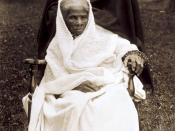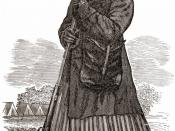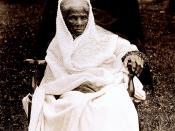The reform movements for abolition and women's rights showed strengths and weaknesses of democracy in the early nineteenth century. Some of the aspects of American democracy worked for and against abolition and women's rights. As American government was biased against slaves and women since its conception, the ball of reform was tough to get rolling. But, as these two movements gained popular support, the ease of democracy to change helped women and blacks gain equality with white men.
Some of the strengths of democracy showed as abolitionism gained support. The right of free speech was a major force in the freeing of slaves. Antislavery pamphlets and newspapers, such as The Liberator, helped persuade the masses that slavery was wrong. The right to assembly helped create some of the first antislavery societies. Since power not given to the federal government was directed towards the states, slaves that escaped to northern states were relatively free.
Many escaped slaves were then important abolitionists, such as Harriet Tubman.
The Abolitionist movement also exposed many of the weaknesses of democracy. Southern leaders in the House of Representatives passed the Gag Rule. This threw out all antislavery laws without debate. Because citizens do not directly vote on these issues, they could not stop this law from being passed. Also, the Union was not in harmony. If the Northern states had managed to pass abolitionist laws, the South could secede from the United States. Not only did the right to free speech help abolitionists, but it also hurt them. Some speakers could persuade mobs into killing antislavery leaders.
Reforms to gain women's rights were helped along by some of the strengths of democracy. Free speech helped bold woman get their views across to millions of other people. If American speech was censored like in many...


